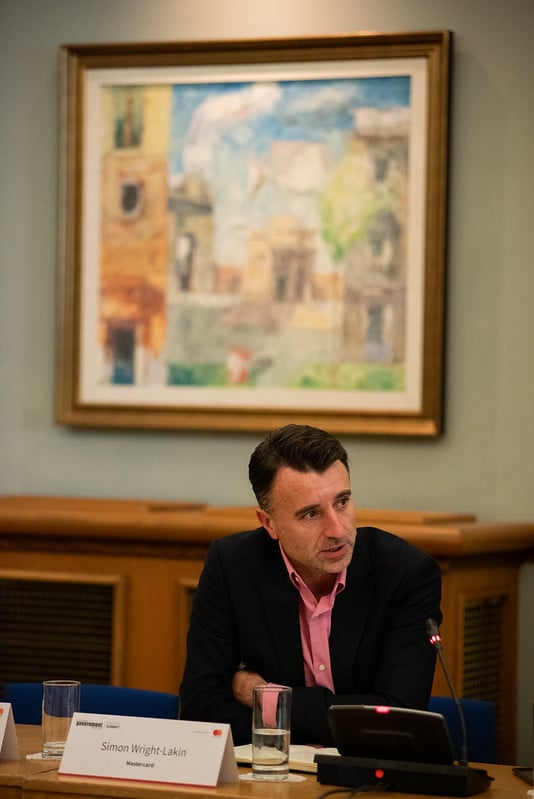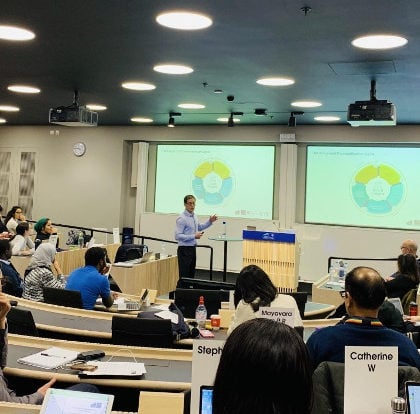If it counts, count it: government finance leaders on boosting productivity

The public sector is often accused of inefficiency – but at the Global Government Finance Summit, top leaders revealed some highly inventive ways of driving up civil service productivity
“The shared sense of purpose that people felt during COVID was very clear; we’re grappling with how to replicate that during a non-crisis period,” said Sarah Glavey, head of public service transformation policy at Ireland’s Department of Public Expenditure, National Development Plan Delivery and Reform. Speaking in the session on civil service productivity at the 2024 Global Government Finance Summit – held this year in Dublin, where the Irish government played host to top finance department officials from 12 countries – Glavey was explaining a project under way to “capture innovations in ways of working that occurred during COVID and other crises, including Ukraine”.
Indeed, at times of great pressure, civil services can prove themselves highly flexible and adaptable. Simon Wright-Lakin, Mastercard’s vice president of public sector Europe solutions and outreach, recalled that during the pandemic, Mastercard had shared anonymised flows of real-time data on financial transactions with governments around the world – helping them to understand COVID’s economic impact and craft suitable policies in response. The firm processes transactions worth US$8.2 trillion annually, he explained, covering 210 countries and 150 currencies. This data provides a picture so granular that analysts can see the “Swift effect” – the localised uplift in spending on travel, food, bars and accommodation that occurs when pop star Taylor Swift stages a concert.
“In a number of countries – certainly, Australia was an example – we were much more comfortable about working with the private sector and using private sector data during COVID, because we were so concerned to understand what was happening,” commented Cath Patterson, deputy secretary of the Budget Group in Australia’s Department of Finance. “Post-COVID, that seems to have fallen away a little bit.”
Read more: The ‘four Ds’: Ireland’s chief economist spells out the major challenges governments face
Follow the money
There is now less immediate need for governments to understand how public behaviour is changing, responded Wright-Lakin – but some governments are turning those relationships and techniques to fresh purposes. “There’s been a shift in the world towards more evidence-based policymaking,” he said, with governments using financial data to forecast and track the impact of policy interventions.

Civil services are also turning their eyes inwards, using data on public sector procurement to improve value for money and tweak purchasing practices to realise public policy goals. As an example, Wright-Lakin (left) explained, Mastercard data can reveal how quickly suppliers are being paid; and if government pays them using a credit card rather than bank transfer, it can get cash into the economy before it has to settle the bill. “So you’re getting funds out to SMEs quickly, but you’re not impacting working capital,” he said.
Procurement solutions can also help governments to guard against risk, he continued – enabling them to spot where funds are flowing to countries subject to economic sanctions, for example, or to companies whose weak cybersecurity might make them vulnerable to cyber attack. And there are further benefits to the use of payment cards, including savings in the administration of procurement processes. Where cards can be used for “the long tail of smaller, less risky transactions”, he argued, “there’s a huge opportunity for productivity”.
Peerless productivity
One country with an excellent reputation for public sector efficiency is Singapore – and Kwa Chin Lum, director of fiscal policy at the city-state’s Ministry of Finance, detailed its characteristically comprehensive approach. Singaporean departments and agencies have “a lot of autonomy to manage their own resources”, he explained, “so trying to derive productivity savings isn’t easy. We need to ensure that there’s a system of discipline that comes from the centre, as well as mechanisms that incentivise efforts by agencies.”
Hence Singapore’s ‘Budget 4.0’ system, whose objectives, Kwa said, include “strengthening reallocation, fostering alignment, and enhancing nimbleness”. The system has “five complementary features”, he explained.
First, the Ministry of Finance imposes a “tax on head counts, forcing agencies to undertake productivity savings over time”, he said. “We do this for budgets too: they don’t grow quite as quickly as GDP, so they all have to think about transformation.” The European Commission takes a similar approach, explained Declan Costello, deputy director-general at the EC’s Directorate-General of Economic and Financial Affairs: “Everyone hates it, but I have to say that it’s quite effective, and creates a central pool of resources for changed priorities.”
Compulsory collaboration
Second, Singapore has created shared budgets sitting across departmental responsibilities – thus forcing collaboration in policy fields that demand coordinated action. “It’s one of the perennial issues of expenditure budgeting that agencies may not necessarily want to work together,” noted Kwa. “So in cross-cutting areas, we have implemented joint budgeting so agencies think very deliberately about how they can collaborate. It helps reduce duplication and ensure synergies across different areas of work.”
Third, there’s a “central digitalisation budget” to which agencies can apply for funds. Working with Singapore’s Smart Nation team, the finance ministry puts its money into the “most ‘needle-moving’ ICT proposals”. Requiring agencies to contribute their own money “imposes a certain discipline”, Kwa added. “We’re always worried that agencies will end up over-specifying their requirements.”

Fourth, Singapore also runs a “public sector transformation budget”, said Kwa (left). Some of this money is given to agencies, which spend it “with light monitoring” from the centre – allowing them to shape projects around their own challenges and priorities – while some is reserved for inter-departmental schemes, disbursed via an application process open to cross-government partnerships. “We want different agencies to have some skin in the game and put resources on the table, saying: ‘We’ll work together on this, but we do require some additional support from the centre of government’,” Kwa explained.
Finally, Singapore runs a central programme evaluation framework, overseeing the effectiveness of spending across its productivity and modernisation efforts. In each spending commitment, “we need to be very clear about the KPIs that we want to measure so we can evaluate the programme”, he commented. “The Ministry of Finance’s role is not to look over the agency’s shoulders at how they do programme evaluation, but to try and build some of those capabilities” – supporting agencies to understand and appraise their own reforms.
Measuring results, not activity
This is no easy task. “Productivity is always very difficult to measure, particularly in the public sector,” commented John McCarthy, the chief economist of Ireland’s Department of Finance. Many countries track outputs – measuring activity and purchases – without appraising their contribution towards achieving public policy goals.
Another government finance leader heartily agreed. Their finance ministry has tried to adopt a form of “performance-based budgeting”, they explained – but found departments trying to fit the targets around their activities, rather than reforming their operations to meet the government’s objectives. “Often the indicators they choose are the ones that are easiest to measure, but that’s not necessarily what you want to measure,” they commented.
The challenge, they continued, is to design KPIs incentivising departments to focus on the government’s real priorities. This is a “cumbersome process”, they commented, but worthwhile: “As soon as you get the ministries and agencies to think about outcomes, it assists us in understanding productivity in the public sector.”
So far, they added, these reforms have generated measurable improvements in both staff morale and user satisfaction. The next task is to draw out cash savings. The trick here is for “the people leading the agencies to take responsibility for this process”, they concluded. “That might lead to reduced head count but I think ministries of finance need to push for it.”
#The invitation-only Global Government Finance Summit is a private event, providing a safe space at which the civil servants leading finance departments and national treasuries can debate the challenges they face in common. We publish these reports to share some of their thinking with our readers: note that, to ensure that participants feel able to speak freely, we give all those quoted the right to review their comments before publication.
The 2024 meeting will be covered in five reports, covering the various sessions:
– John McCarthy, Chief Economist of Ireland’s Department of Finance, analyses the structural challenges facing advanced economies
– How finance ministries can use artificial intelligence
– Making tax less taxing: using technology to improve assessement and collection
– How to improve public sector productivity
– Using ‘just in time’ insight in government finance and service delivery
For information on the next Global Government Finance Summit, which will be held in June 2025, visit our dedicated website.





















